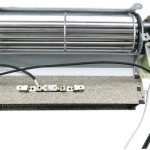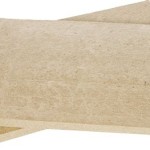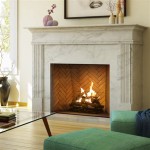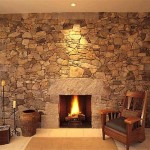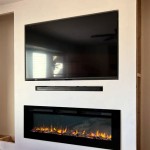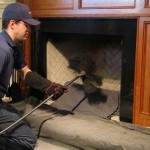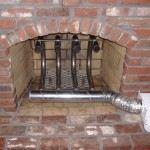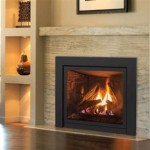Fireplace Stone Veneer: A Comprehensive Guide
Fireplace stone veneer provides a cost-effective and aesthetically pleasing alternative to natural stone for enhancing the visual appeal and perceived value of a fireplace. It offers a wide array of design possibilities, enabling homeowners and builders to achieve the look of a traditional masonry fireplace without the weight, expense, and structural requirements of solid stone.
Stone veneer is manufactured from a variety of materials, including concrete, natural stone remnants, and manufactured aggregates. These materials are molded and colored to replicate the appearance of various types of natural stone, such as fieldstone, river rock, ledge stone, and stacked stone. The resulting veneer is typically thinner and lighter than natural stone, simplifying installation and reducing the need for extensive structural support.
The application of fireplace stone veneer involves adhering individual pieces to a prepared surface using mortar or adhesive. This process allows for a customized design, as the veneer can be cut and arranged to create unique patterns and textures. Furthermore, the variety of available colors and styles ensures that the veneer can complement a wide range of architectural designs and interior decor.
Maintaining the integrity and appearance of fireplace stone veneer typically involves periodic cleaning to remove dust, soot, and other debris. Sealing the veneer can provide additional protection against staining and water damage, extending its lifespan and preserving its aesthetic appeal. Proper installation and maintenance are crucial for ensuring the long-term durability and performance of the veneer.
Understanding the Types of Fireplace Stone Veneer
The market offers two primary types of fireplace stone veneer: manufactured stone veneer and natural stone veneer. While both serve the same fundamental purpose, they differ significantly in their composition, production methods, and overall properties.
Manufactured stone veneer, also known as faux stone veneer, is crafted from a blend of concrete, aggregates, and pigments. This material is poured into molds designed to replicate the textures and shapes of natural stone. The precise composition and manufacturing process allow for consistent color and texture, ensuring uniformity across the entire installation.
The advantages of manufactured stone veneer include its lighter weight, lower cost, and ease of installation compared to natural stone. Its consistent properties also make it easier to cut and shape, simplifying the creation of intricate designs. Additionally, manufactured stone veneer is often more resistant to weathering and fading than some types of natural stone.
Natural stone veneer, on the other hand, is created by slicing thin layers of natural stone from larger stones. This process preserves the natural variations in color, texture, and veining that are inherent in natural stone. Each piece of natural stone veneer is unique, contributing to a more authentic and organic appearance.
While natural stone veneer offers a more realistic aesthetic, it is generally more expensive and heavier than manufactured stone veneer. The installation process can also be more complex, requiring specialized tools and techniques to cut and shape the stone. Furthermore, natural stone veneer may require sealing to protect it from moisture and staining.
The selection between manufactured and natural stone veneer depends on factors such as budget, desired aesthetic, installation complexity, and long-term maintenance requirements. Evaluating these factors carefully will ensure that the chosen veneer aligns with the homeowner's preferences and project goals.
Installation Process and Considerations
The installation of fireplace stone veneer is a multi-step process that requires careful planning and execution to ensure a secure and aesthetically pleasing result. Proper surface preparation, accurate measurements, and the use of appropriate materials are essential for a successful installation.
The first step involves preparing the surface to which the veneer will be applied. This typically entails cleaning the surface thoroughly to remove any dirt, debris, or loose material. For masonry surfaces, such as brick or concrete, a wire brush can be used to remove any efflorescence or crumbling mortar. For non-masonry surfaces, such as drywall or wood framing, a layer of cement board is typically installed to provide a stable and moisture-resistant substrate.
Next, a scratch coat of mortar is applied to the prepared surface. This provides a textured surface that allows the veneer to adhere properly. The scratch coat should be allowed to dry for at least 24 hours before proceeding with the veneer installation. It is crucial the scratch coat is properly applied and cured to prevent future veneer adhesion issues.
The veneer stones are then applied individually using mortar or adhesive. It is important to follow the manufacturer's instructions regarding the type of mortar or adhesive to use and the proper application technique. The stones should be arranged in a pattern that is both visually appealing and structurally sound. Gaps between the stones can be filled with mortar to create a traditional masonry look, or they can be left open for a more modern aesthetic. The thickness of the mortar joints can also be varied to create different visual effects.
After the veneer has been installed, it is important to allow the mortar or adhesive to cure completely before applying any sealant or finishing products. The curing process can take several days, depending on the temperature and humidity. Once the mortar has cured, any excess mortar can be cleaned from the surface of the veneer using a brush and water.
Consideration needs to be given to the firebox opening. Non-combustible materials should surround the opening. Check local building codes for specific requirements regarding clearances from the firebox to combustible materials. These codes are designed to prevent fires and ensure the safety of the occupants.
Maintenance and Longevity of Fireplace Stone Veneer
Proper maintenance is critical for preserving the appearance and extending the lifespan of fireplace stone veneer. Regular cleaning and occasional sealing can help protect the veneer from staining, water damage, and other forms of deterioration.
The frequency of cleaning will depend on the location of the fireplace and the amount of use it receives. Fireplaces that are used frequently or those located in areas with high levels of dust or soot may require more frequent cleaning than those that are used less often or are located in cleaner environments.
Cleaning fireplace stone veneer typically involves using a soft brush and a mild detergent solution. Harsh chemicals and abrasive cleaners should be avoided, as they can damage the surface of the veneer. The veneer should be rinsed thoroughly with clean water after cleaning to remove any residual detergent.
Sealing fireplace stone veneer can provide additional protection against staining and water damage. Sealers are typically applied with a brush or roller, and they penetrate the surface of the veneer to create a protective barrier. The type of sealer to use will depend on the type of veneer and the desired level of protection. It is important to follow the manufacturer's instructions when applying a sealer.
Regularly inspecting the veneer for cracks, chips, or other damage is also important. Any damage should be repaired promptly to prevent further deterioration. Small cracks can be filled with mortar or caulk, while larger cracks or chips may require the replacement of individual veneer stones. Damaged stones can expose the underlying substrate to moisture, leading to further damage and potential structural issues.
The longevity of fireplace stone veneer depends on several factors, including the quality of the materials, the installation process, and the level of maintenance. With proper care and maintenance, fireplace stone veneer can last for many years, providing a beautiful and durable focal point for the home.

11 Stone Veneer Fireplace Surround Design Trends Where To Buy

Thin Stone Veneers Make A Fireplace Update Easy Swenson Granite 100 Natural Stones

11 Stone Veneer Fireplace Surround Design Trends Where To Buy

Thincut Natural Stone Veneer Csi All Things Can En

Weathered Stone Veneer Natural Thin Cape Cod Nantucket Ma

The Benefits Of Thin Stone Veneer For Your Fireplace

Natural Stacked Stone Veneer Fireplace Ideas

7 Popular Stone Veneer Fireplace Design Trends Mason S Mark

Custom Stone Fireplace Archives Native

Stone Veneer Fireplace Ideas That Will Warm Up Your Home Ply Gem
Related Posts

